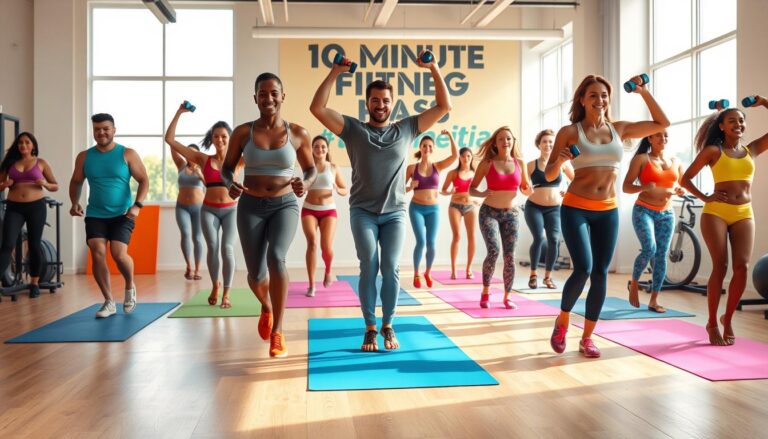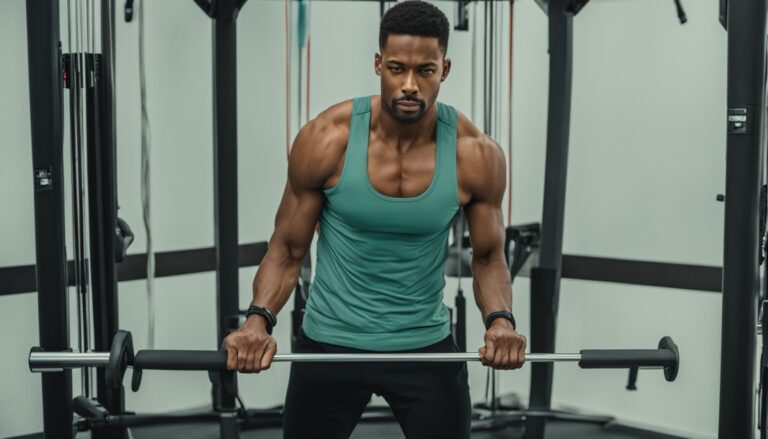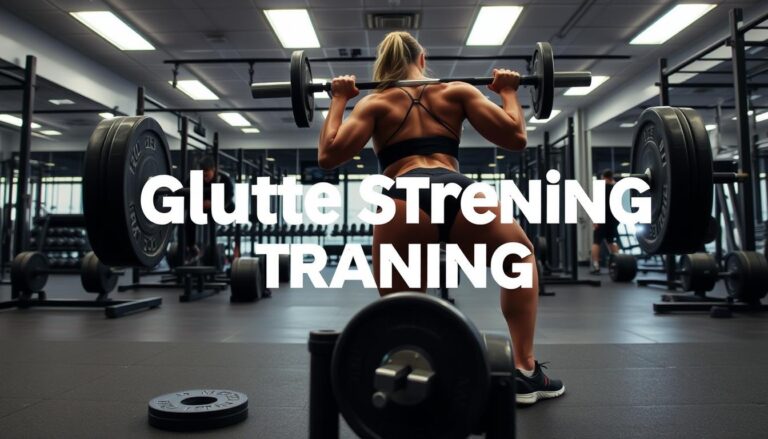Reading this you will understand some of my recommended Cable Workout For Calves. As a fitness enthusiast, I’ve long been fascinated by the pursuit of strong, well-defined calves. In this comprehensive guide, I’ll share effective cable workouts that can help you build stronger and more impressive lower legs. Incorporating cable exercises into your calf training routine can lead to significant strength gains and muscle growth, taking your lower leg development to new heights.
By the end of this article, you’ll have a better understanding of the importance of calf training, and all the best Cable Workouts for Calves. We will go over the specific muscle groups involved, and the unique advantages that cable exercises offer for targeting and strengthening the calves. Let’s dive in and explore the world of cable-based calf training, unlocking the secrets to building impressive lower leg musculature.
Key Takeaways
- Cable exercises provide an effective and versatile solution for calf muscle strengthening and growth.
- Incorporating cable calf raises into your routine can lead to significant improvements in calf size, strength, and definition.
- Understanding the anatomy of the calf muscles and their functional roles is crucial for designing effective cable-based calf workouts.
- Proper form and execution are essential when performing cable calf exercises to maximize results and minimize injury risk.
- Integrating a variety of cable calf exercises into your training program can help create a balanced and aesthetically pleasing lower leg development.
The Importance Of Properly Utilizing Cable Workouts for Calves
Calf training is often overlooked, but it plays a crucial role in the overall aesthetics of your physique and your functional capabilities. Well-developed calf muscles not only look impressive but also help to create a balanced and proportional lower body. Additionally, strong calves provide numerous functional benefits for everyday activities, such as improved posture, better balance, and increased power in movements like walking, running, and jumping.
Aesthetics and Muscular Balance
Aesthetically, strong and defined calf muscles can greatly enhance the overall appearance of your legs and lower body. Achieving a proportional and symmetrical physique is a key goal for many fitness enthusiasts, and calf muscle strengthening is an essential component in reaching this objective.
Functional Benefits for Daily Life
Beyond the aesthetic benefits, calf muscle strengthening and bodyweight calf exercises can also improve your functional capabilities in everyday life. Robust lower leg training can lead to better posture, enhanced balance, and increased power generation, which can be especially beneficial for activities such as walking, running, and jumping.
“Incorporating regular calf training into your fitness routine can have a profound impact on both the appearance and functionality of your lower body.”
Whether your goal is to achieve a visually striking physique or enhance your performance in daily tasks, prioritizing calf training is a crucial aspect of a well-rounded fitness regimen.
Anatomy of the Calf Muscles
Understanding the anatomy of the calf muscles is crucial when designing an effective workout routine for standing calf exercises, seated calf raises, and donkey calf raises. The calf muscle consists of two primary muscles: the gastrocnemius and the soleus.
The gastrocnemius is the larger, more visible muscle that gives the calf its distinctive shape. This muscle is responsible for the majority of the calf’s aesthetics and plays a significant role in standing calf exercises and seated calf raises. On the other hand, the soleus is a deeper muscle that contributes to overall calf size and strength, making it a key target for exercises like donkey calf raises.
| Muscle | Function | Exercises |
|---|---|---|
| Gastrocnemius | Responsible for the calf’s distinctive shape and aesthetics | Standing calf exercises, Seated calf raises |
| Soleus | Contributes to overall calf size and strength | Donkey calf raises |
By understanding the unique roles and characteristics of these two calf muscles, you can design a well-rounded training program that targets both the gastrocnemius and soleus for optimal calf development and strength. Incorporating a variety of calf exercises, such as those found in the Athlean-X calf workout guide, can help you achieve your desired aesthetic and functional goals.
“Neglecting calf training can lead to muscular imbalances and potentially impact your overall lower body performance and aesthetics.”
Cable Workout For Calves: The Ultimate Solution
When it comes to building powerful calves, cable exercises offer a versatile and highly effective solution. Compared to traditional free-weight exercises, cable-based movements provide constant tension throughout the full range of motion, resulting in greater muscle activation and growth potential. Additionally, the adjustable resistance of cables allows for targeted training of specific muscle groups within the calf, making it an invaluable tool for enhancing calf strength and size.
Advantages of Cable Exercises
One of the primary benefits of incorporating cable exercises into your calf workout routine is the constant tension they provide. Unlike free weights, which often lose resistance at certain points in the movement, cables maintain consistent resistance, challenging the muscles throughout the entire range of motion. This continuous tension helps maximize muscle fiber recruitment, leading to more effective muscle development and growth.
Versatility and Muscle Activation
The versatility of cable machines also makes them an excellent choice for targeting and isolating specific muscle groups within the calves. By adjusting the cable height, angle, and grip, you can emphasize the contraction of the gastrocnemius (the larger, outer calf muscle) or the soleus (the smaller, inner calf muscle), allowing for a more balanced and comprehensive calf workout.
“Cable exercises have become an integral part of my calf training routine. The constant tension and targeted muscle activation have helped me achieve significant improvements in both the size and strength of my calves.”
Whether you’re a beginner or an experienced fitness enthusiast, incorporating cable calf raises, cable workout for calves, and other calf workout routines into your training regimen can be a game-changer in building strong, well-defined calves. By harnessing the advantages of cable-based exercises, you can maximize your calf development and take your lower body strength to new heights.

Standing Calf Raises with Cables
The standing calf raise with cables is a fundamental exercise for targeting the gastrocnemius muscle, the larger of the two calf muscles. By standing with your feet shoulder-width apart and using a cable attachment, you can perform controlled, full-range-of-motion standing calf exercises to stimulate growth and strength in the lower legs.
This exercise offers several benefits over traditional bodyweight calf raises. The cable resistance provides constant tension throughout the movement, ensuring your calves work hard from the bottom to the top of the lift. Additionally, the cable setup allows for a more isolated and focused contraction of the calf muscles, helping to maximize muscle fiber recruitment and engagement.
To perform the cable calf raises:
- Stand facing a cable station with your feet shoulder-width apart.
- Attach a rope or stirrup handle to the cable, and grasp it with both hands at chest height.
- Keeping your core engaged, slowly raise up on your toes, feeling the contraction in your calves.
- Pause briefly at the top of the movement, then lower your heels back to the starting position in a controlled manner.
- Repeat for the desired number of repetitions, making sure to keep your movements controlled and your form consistent throughout the set.
Incorporating standing calf exercises with cables into your routine can be a game-changer for building impressive, well-developed calves. The constant resistance and isolated muscle targeting make this a highly effective exercise for calf strength and growth.
| Exercise | Targeted Muscle | Benefits |
|---|---|---|
| Standing Calf Raises with Cables | Gastrocnemius | Constant tension, isolated muscle engagement, improved calf strength and size |
Seated Calf Raises with Cables
The seated calf raise with cables is an excellent exercise for targeting the soleus muscle, which is often overlooked in calf training. By performing this exercise in a seated position, you can isolate and engage the soleus more effectively, leading to a more balanced and developed lower leg. Proper form and execution are crucial to ensure maximum muscle activation and avoid injury.
Proper Form and Execution
To perform the seated cable calf raises correctly, follow these steps:
- Sit on a bench or chair with your back straight and your feet hip-width apart.
- Attach a rope or strap to the cable machine at a height that allows your ankles to be at or slightly below hip level when seated.
- Grasp the rope or strap and place the backs of your shoulders against the bench, keeping your torso stationary.
- Slowly raise your heels, lifting your body by contracting your seated calf raises muscles. Focus on keeping your movement controlled and controlled.
- Pause briefly at the top of the movement, then slowly lower your heels back down to the starting position.
Remember to keep your core engaged and avoid excessive movement in your upper body during the exercise. This will help you isolate the calf muscles and get the most out of the cable workout.
“The seated calf raise with cables is a game-changer for building strong, defined calves. The constant tension and controlled movement make it a must-add to any calf training routine.”
By incorporating seated calf raises with cables into your workout routine, you’ll be well on your way to building powerful, aesthetically pleasing calves that contribute to a balanced, athletic physique.
Donkey Calf Raises with Cables
When it comes to calf training, the donkey calf raise with cables is a unique exercise that targets the elusive soleus muscle. This deep-seated muscle plays a crucial role in ankle flexion and overall calf development, and by performing the exercise in a bent-over position with slightly bent knees, you can effectively isolate and stimulate the soleus for maximum growth and strength.
Targeting the Soleus Muscle
The donkey calf raise with cables is a game-changer for those seeking to build impressive calves. By focusing on the soleus, this exercise complements the work done in the standing and seated calf raise variations, providing a well-rounded approach to calf training. The soleus muscle, often overlooked, is responsible for stabilizing the ankle and contributing to overall lower leg strength, making it an essential component of a comprehensive calf-building regimen.

To perform the donkey calf raise with cables, begin by attaching a rope or strap to a low cable pulley. Bend at the hips, keeping your back straight and knees slightly bent, and grip the rope or strap with both hands. Slowly lower your heels towards the floor, feeling the stretch in your calves, then engage your calf muscles to raise your heels back up, contracting at the top of the movement. Repeat for the desired number of reps, ensuring that your form remains consistent throughout the exercise.
By incorporating this targeted exercise into your calf routine, you’ll be well on your way to developing impressive, well-rounded calf musculature that not only looks great but also provides functional benefits in your daily activities and athletic pursuits.
Single-Leg Calf Raises with Cables
Incorporating single-leg calf raises with cables is a valuable addition to your calf training routine. This exercise challenges each calf independently, promoting balanced development and unilateral strength. By focusing on one leg at a time, you can also identify and address any muscular imbalances between your left and right calves.
The advantages of this exercise are numerous. First and foremost, it allows you to target each calf muscle more effectively, ensuring equal attention and growth on both sides. This is particularly important for athletes or individuals who engage in activities that may favor one leg over the other, leading to muscular imbalances.
To perform single-leg calf raises with cables, set up a cable station with a rope or strap attachment. Stand on one leg, keeping the other foot off the floor. Slowly raise up onto your toes, feeling the contraction in your calf muscle. Pause briefly at the top of the movement, then lower back down with control. Repeat for the desired number of reps, then switch legs.
- Promotes balanced calf development
- Identifies and addresses muscular imbalances
- Targets each calf muscle independently
- Enhances unilateral strength and stability
Incorporating single-leg calf raises with cables into your routine is a game-changer for building strong, well-defined calves. By challenging your muscles in this unilateral manner, you’ll see improvements in both the appearance and function of your lower legs.
“Calf training is often overlooked, but it’s crucial for both aesthetics and functional strength. Single-leg calf raises with cables are a fantastic exercise to address this often-neglected muscle group.”
Incorporating Calf Training into Your Routine
To maximize the benefits of cable-based calf exercises, it’s essential to incorporate them into a well-rounded calf training routine. By combining various cable-based movements, you can target all aspects of calf development and achieve the sculpted, powerful calves you desire.
Sample Calf Workout Routine
Here’s a sample calf workout routine that leverages the versatility of cable exercises:
- Standing Calf Raises with Cables: 3-4 sets of 12-15 reps
- Seated Calf Raises with Cables: 3-4 sets of 10-12 reps
- Donkey Calf Raises with Cables: 3-4 sets of 8-10 reps
- Single-Leg Calf Raises with Cables: 3-4 sets of 10-12 reps per leg
This comprehensive routine hits all the major calf muscles, including the gastrocnemius and soleus, ensuring balanced development and optimal growth. Remember to focus on proper form, controlled movements, and progressive overload to continually challenge your calf muscles.
Integrating this calf workout routine into your overall training program can be an effective way to build impressive calf strength and size. Dedicating one or two dedicated calf sessions per week, or incorporating calf-specific exercises into your lower body workouts, can help you achieve the well-proportioned, aesthetically pleasing lower body you’re after.
“Consistent calf training with cable calf raises can be a game-changer for your lower body development. The targeted muscle activation and versatility of these exercises make them an essential addition to any serious fitness regimen.”
Conclusion
In conclusion, incorporating cable-based exercises into your calf training can be a transformative approach to building stronger, more impressive calves. By understanding the unique anatomy of the calf muscles and leveraging the distinct advantages of cable exercises, you can unlock new levels of muscle growth and functional strength in your lower legs.
The cable workouts and strategies outlined in this guide, such as standing calf raises, seated calf raises, donkey calf raises, and single-leg calf raises, provide a versatile and effective solution for calf muscle strengthening and development. By consistently incorporating these cable-based exercises into your routine, you’ll be well on your way to achieving the calf definition and athleticism you’ve always desired.
Embrace the power of cable training for your calves, and watch as your lower legs transform, enhancing both the aesthetic appeal and functional benefits of your physique. With dedication and the right techniques, you can take your calf muscle strength and lower leg training to new heights.
FAQ
What are the benefits of incorporating cable exercises into my calf training routine?
Cable exercises offer several advantages for calf development, including constant tension throughout the full range of motion, targeted muscle activation, and the ability to isolate and address muscular imbalances.
How do the calf muscles work, and why is it important to target both the gastrocnemius and soleus?
The calf muscle consists of two primary muscles: the gastrocnemius and the soleus. The gastrocnemius is the larger, more visible muscle, while the soleus is a deeper muscle. Targeting both muscle groups is crucial for achieving balanced and proportional calf development.
What are the key cable-based calf exercises I should incorporate into my routine?
Some of the most effective cable-based calf exercises include standing calf raises, seated calf raises, donkey calf raises, and single-leg calf raises. Each of these exercises targets the calf muscles in different ways, allowing for a comprehensive approach to calf training.
How can I integrate calf training into my overall workout program?
To optimize calf development, it’s important to incorporate calf exercises into your regular workout routine. I’ll provide a sample calf workout routine that combines various cable-based exercises, as well as suggestions on how to incorporate calf training into your overall fitness plan.







